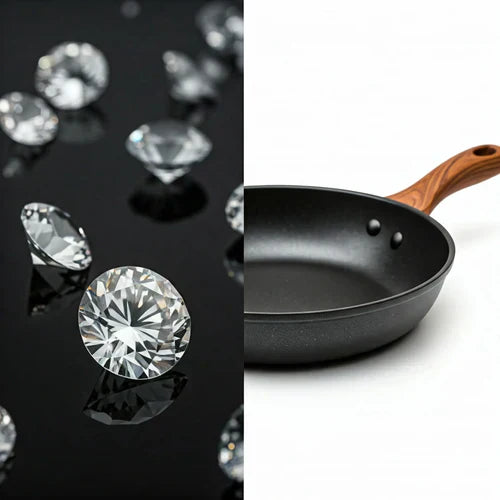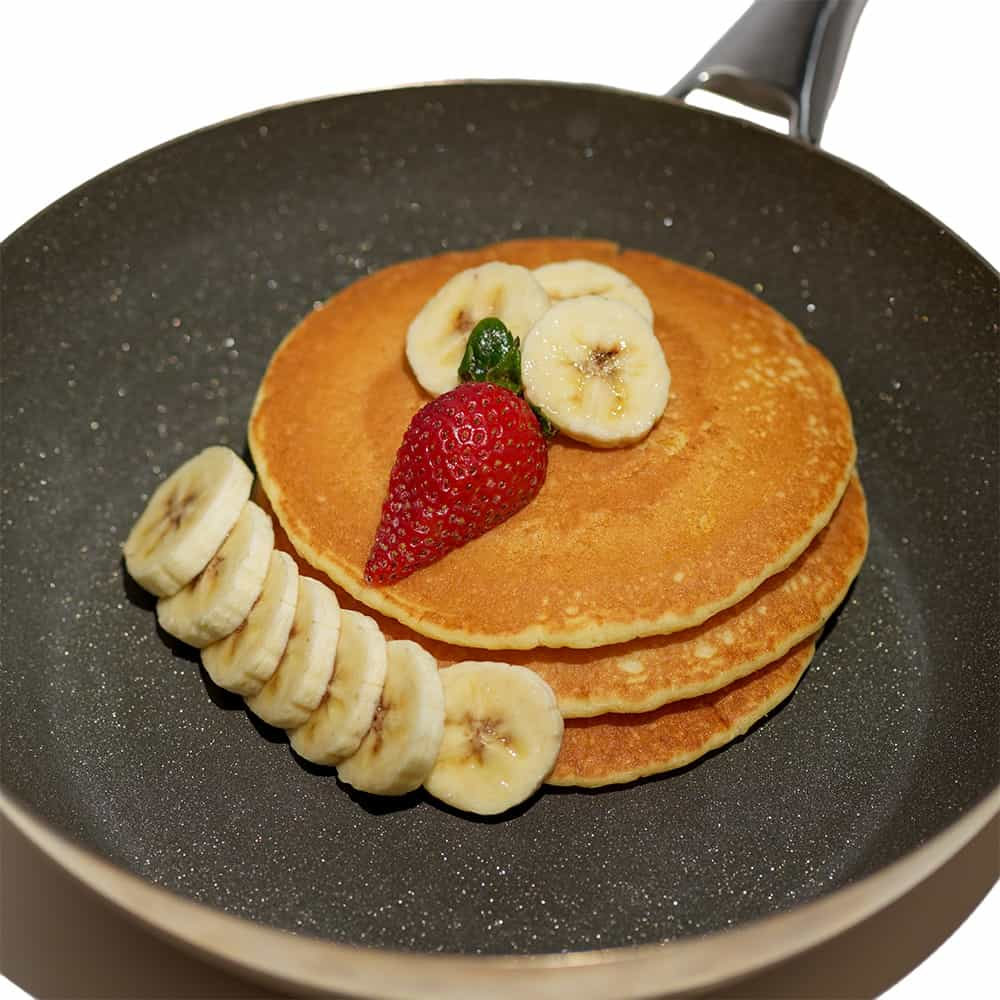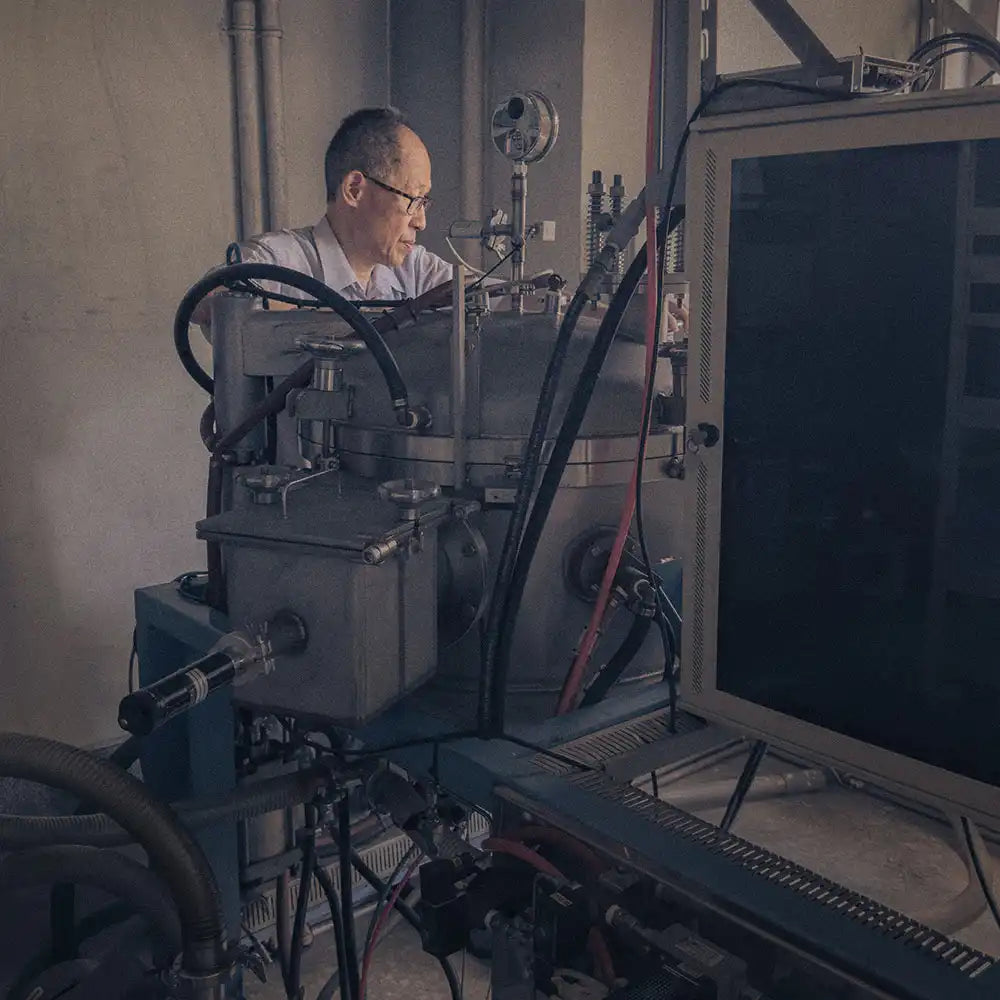
Is Diamond Coating the Same as Teflon? The Truth About Nonstick Pans
 Is Diamond Coating the Same as Teflon?
Is Diamond Coating the Same as Teflon?
Let’s dive deeper.
Teflon vs. Diamond Coating: What’s the Difference?
Teflon (PTFE): The Classic Nonstick
Composition: A fluoropolymer in the PFAS family (“forever chemicals”).
Pros: Affordable, widely available, slick surface.
Cons: Scratches easily, degrades above 570°F, and raises health/environmental concerns due to PFAS.
Diamond Coating: A Step Up?
Most “diamond-coated” pans fall into two categories:
- Diamond + Ceramic Mix: Diamond dust is added to ceramic for extra scratch resistance.
-
Vacuum-Brazed Diamond: A premium method where diamonds are fused to metal under high heat—no PFAS, ultra-durable, and naturally nonstick.

Key Comparisons
| Factor | Teflon | Diamond Coating | Vacuum-Brazed Diamond |
|---|---|---|---|
| Safety | PFAS concerns | Typically PFAS-free | PFAS-free |
| Durability | Prone to scratches | Better scratch resistance | Extremely scratch-resistant |
| Eco-Friendly | Environmental persistence | Depends on base materials | Long-lasting, minimal waste |
Why Vacuum-Brazed Diamond Cookware Is a Game-Changer
Diamond cookware that uses vacuum-brazed technology skips chemicals entirely. Here’s why it’s worth considering:
- PFAS-Free: No PTFE or ceramic matrix—just diamonds bonded to carbon steel or titanium.
- Built to Last: Resists scratches from metal utensils and abrasive cleaning.
- Even Heating: Diamonds conduct heat 5x better than copper, reducing hot spots.
- Eco-Conscious: No flaking or chemical leaching, making it safer for your family and the planet.
Choosing the Right Cookware for You
When to Avoid Teflon:
- You cook at high temperatures (searing, stir-frying).
- You’re concerned about PFAS exposure.
- You want cookware that lasts decades, not years.
Why Consider Vacuum-Brazed Diamond:
- Versatility: Works on all stovetops (induction included).
- Low Maintenance: No special tools or gentle cleaning required.
-
Trust: Transparent brands often offer lifetime warranties.

FAQs
Is diamond-coated cookware safer than Teflon?
Yes. Diamond-coated cookware typically does not use PFAS-based materials, which addresses many of Teflon’s safety concerns.
Can I use metal utensils on diamond-coated pans?
For diamond-ceramic pans, check the manufacturer’s guidelines. Vacuum-brazed diamond surfaces handle metal tools effortlessly.
Does diamond coating chip over time?
Cheaper coatings can chip, but vacuum-brazed coatings bond diamonds at a molecular level, preventing flaking.
Is vacuum-brazed cookware worth the cost?
Yes. It outperforms traditional nonstick and lasts significantly longer, reducing replacement costs and waste.
Are there eco-friendly alternatives to Teflon?
Vacuum-brazed diamond cookware is a top choice—durable, chemical-free, and recyclable.
Final Thoughts
Diamond coating and Teflon aren’t the same, but not all diamond cookware is created equal. For those seeking a safer, longer-lasting alternative to traditional nonstick, vacuum-brazed diamond technology offers a modern solution—combining science-backed durability with peace of mind.
Next time you’re upgrading your kitchen, think beyond the “nonstick” label. Prioritize materials that align with your health, values, and love for cooking.
Reference
- Non-stick surface - Wikipedia
- National Institutes of Health: PFAS
- How PFAS Impacts Your Health - CDC
- Our Current Understanding of the Human Health and Environmental Risks of PFAS - EPA
- Are Fluoropolymers Really of Low Concern for Human and Environmental Health and Separate from Other PFAS? - ACS Publications
- Per- and poly-fluoroalkyl substances (PFAS) effects on lung health: a perspective on the current literature and future recommendations - Frontiers
- Diamond non-stick surface and cooking utensils - United Kingdom's Intellectual Property Office
- Is Nonstick Cookware Like Teflon Safe to Use? - Healthline
- Can Teflon Cookware Increase Your Risk of Cancer? - Healthline
- Is It Safe to Use Products Containing Teflon Coating? - WebMD
- Ceramic vs. Nonstick: Which Cookware Should I Buy? - The Spruce Eats
- What Is Diamond Coating on Pans & Is It Safe? - diamondPans
- Safest Cookware: Diamond-Infused vs. Teflon - diamondPans
- Is Diamond Coating on Pans Safe? A Quick Answer + What You Need to Know
- Vacuum Brazed vs. Diamond-Infused Cookware: The Guide to Choosing High-Performance Kitchen Tools - diamondPans
- How to Choose Diamond Cookware: Carat Weight Matters Most - diamondPans
- Best Diamond Coated Cookware? What You NEED to Know Before You Buy - diamondPans
- What are PFAS and Why Should People Choose PFAS-Free Cookware? - diamondPans
- Diamond Cookware: A Safe and PFAS-Free Nonstick Option - diamondPans
- PFAS Regulations in the U.S. and Their Impact on Nonstick Cookware - diamondPans
- Best Diamond Cookware for Home Cooks in the USA: Top Brands & Benefits - diamondPans


